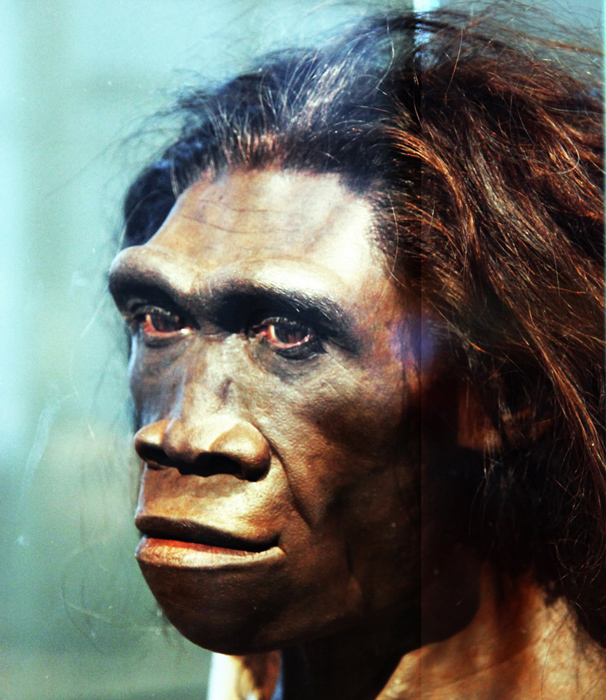Religious beliefs and practices are widespread among societies across the world. Though they are markedly different, the process and tradition of having religion prominent in life is a universal institution unique to humans. No one has been able to identify why.
However, the logic of scientists leads scholars to believe that everything comes from somewhere and, as such, human religion, or more specifically the religion of Homo Sapiens, must have evolved from somewhere. To find out where it has developed it is necessary to go far back into the depths of time to look for clues.
To reach a useful conclusion the concept of what a “religion” is must be defined. Emile Durkheim is a leading researcher who defines religion as an emotional liveliness coming from periodic gatherings of hunting and gathering food collectors.
This definition is wide-ranging and comprehensive enough to include all religions past and present. It has five underlying factors: Unified beliefs, ritual practices, sacred items (which are fetishized as “exclusive” and can be forbidden), and the ability to unite individuals into a moral community.
If this definition is accepted, then it may be possible that modern humans are not the inventors of religion. The ancestor of Homo Sapiens, the early hominid Homo Erectus, seemingly also had its own religion that flourished throughout the world, and the echoes of which have lasted into the modern-day.
Origins of Religion
The Lower and Middle Paleolithic periods that were dominated by the Homo Hominins (The beginning of what is known as Man) lasted for an extremely long time. Starting approximately 2 million years ago, the practices of these several species of early man continued until around 50,000 years ago.

This huge stretch of prehistoric time is considered a period of relative stability with little cultural change. No substantial evidence has been found to suggest that there was any religion for much of this period. However, when the period dominated by the Homo Erectus (1.5 million years ago to 500,000 years ago) is scrutinized in more detail, this apparent absence begins to change.
Archaeological evidence has begun to find artifacts dated to this period that indicate that the Homo Erectus had developed an appreciation for ritual and a sense of moral responsibility. This does not translate as full-blown religious practices, but it is certainly a change from its forebearers.
One area of interest that has given some indication of this is the evidence of cannibalism and mutilation in Java, Indonesia. The skulls found there show signs of tampering with the braincase, which suggests that the brain and skin of the head were removed intentionally and ritualistically.
What did this Religion Look Like?
Due to the nature of archaeology and anthropology, researchers are forced to look at what they already know and project their findings backward. It thus becomes very hard to make any strict conclusions without written evidence of which there is none. However, there have been some indications to give an idea of what this archaic religion may have looked like.
Religion in the Paleolithic era was most likely polytheist, meaning that Homo Erectus worshipped many deities or gods. This kind of practice usually predates monotheism in recorded history and as such, past societies likely worshipped in this way.
Additionally, researchers have extrapolated that in the ancient world (primarily the Romans and Greeks) society also focused on orthopraxy. Orthopraxy was a focus on correct faith and belief which includes the use of rituals. There may be an echo of this in early religion, which would have likely been superstitious, and centered on practical outcomes such as having sufficient food and shelter.
As well as this, shamanism may likely have been a major part of any religion practiced in this period. Shamanism in this sense is used in a broad way to refer to spiritual experiences. These spiritual experiences often involve altering the state of consciousness where practitioners render themselves in ecstatic or extreme psychological states that allows them to communicate with the spirits.
The study of prehistoric shamanism is controversial, however. Many modern scholars disagree about the validity of this theory due to the lack of evidence available, but the strong correlation between drug use and religion throughout history does suggest that Homo Erectus liked to get high.

One myth that has been debunked from the catalog of prehistoric religion is that of bear worship. Early scholars found skeletons of extinct bears in the Paleolithic habitats. This led them to conclude that in this era, bears were venerated.
- Zoroastrianism: the Religion of Fire that inspired the Hebrew Bible
- Adam’s Calendar: A 300,000-Year-Old Alien Site in Africa?
This theory was popular in the early 20th century from finds in Switzerland. Bones that were not categorized as having a function were deemed ritualistic. However, the idea was largely discredited in the 1970s with the new conclusion that the bones were not arranged by man, but rather moved within sedimentary deposits over thousands of years.
Did Homo Sapiens Borrow Their Religion?
There have been confirmed finds dated to the late Homo Erectus period that indicate similar traditions to those of the early Homo Sapiens period. Art-making capabilities have been demonstrated by shell engravings with geometric patterns, which can be found in later periods as well.
Later finds like the Venus of Tan-Tan indicate a fashion similar to those of icons that can be found in the later human civilizations. These depictions are closely based on the human form and suggest that fertility and the miracle of childbirth was a key focus for early hominids.

As well as this, Homo Erectus appear to be the earliest human to have purposefully collected red pigments like ochre. Many decorated sticks have been found that have been purposefully trimmed and shaped, often used in pole structures.
Homo Erectus certainly had fire before us, and the pigments may have even been heated to provide a range of colors. Ochre has no practical value, and as such may have been a conscious aesthetic choice for Homo Erectus.
This decoration of their environment points to a spiritual understanding of the world around them. It may not be directly linked but it does show a very early form of religious behavior, one that finds its echoes in the stained glass of modern temples, or the symbology of modern religions.
Homo Erectus and Homo Sapiens
There are marked differences between the Homo Erectus and Homo Sapiens. When it comes to religion, however, there does seem to be an indication of ritualistic beliefs and behaviors that are similar to those practiced by Homo Sapiens.
Though there are certainly differences. For example, there is no evidence that Homo Erectus honored their dead. Unfortunately, until more finds are located it will be impossible to tell but it is an exciting prospect, nonetheless.
Top Image: Was there religion before Homo Sapiens? Source: photosvac / Adobe Stock.
By Kurt Readman